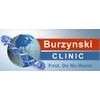Antineoplaston Therapy in Treating Patients With Stage III or Stage IV Prostate Cancer
Adenocarcinoma of the Prostate, Stage III Prostate Cancer, Stage IV Prostate Cancer

About this trial
This is an interventional treatment trial for Adenocarcinoma of the Prostate
Eligibility Criteria
DISEASE CHARACTERISTICS: Histologically proven localized, regional, or metastatic adenocarcinoma of the prostate Progressive disease during prior hormonal therapy (both antiandrogen and gonadotropin-releasing hormone) and must continue hormonal therapy Measurable tumors or tumor markers Bone metastases allowed PATIENT CHARACTERISTICS: Age: 18 and over Performance status: Karnofsky 60-100% Life expectancy: At least 3 months Hematopoietic: WBC at least 3,000/mm^3 Platelet count at least 100,000/mm^3 Hepatic: No hepatic failure Bilirubin no greater than 2.5 mg/dL SGOT no greater than 2 times normal Renal: No chronic renal failure BUN less than 60 mg/dL Creatinine no greater than 2.5 mg/dL OR Creatinine clearance greater than 60 mL/min Blood ammonia normal Cardiovascular: No severe heart disease Pulmonary: No severe lung disease Other: Fertile patients must use effective contraception during and for 4 weeks after study participation No serious active infections or fever No other prior or concurrent second malignancy within the past 2 years PRIOR CONCURRENT THERAPY: Biologic therapy: At least 4 weeks since prior biologic therapy and recovered Chemotherapy: At least 4 weeks since prior chemotherapy and recovered Endocrine therapy: See Disease Characteristics Radiotherapy: At least 4 weeks since prior radiotherapy and recovered Surgery: Not specified Other: At least 4 weeks since prior investigational clinical trial No other concurrent treatment for metastatic prostate cancer
Sites / Locations
- Burzynski Clinic
Outcomes
Primary Outcome Measures
Secondary Outcome Measures
Full Information
1. Study Identification
2. Study Status
3. Sponsor/Collaborators
4. Oversight
5. Study Description
6. Conditions and Keywords
7. Study Design
8. Arms, Groups, and Interventions
10. Eligibility
12. IPD Sharing Statement
Learn more about this trial
